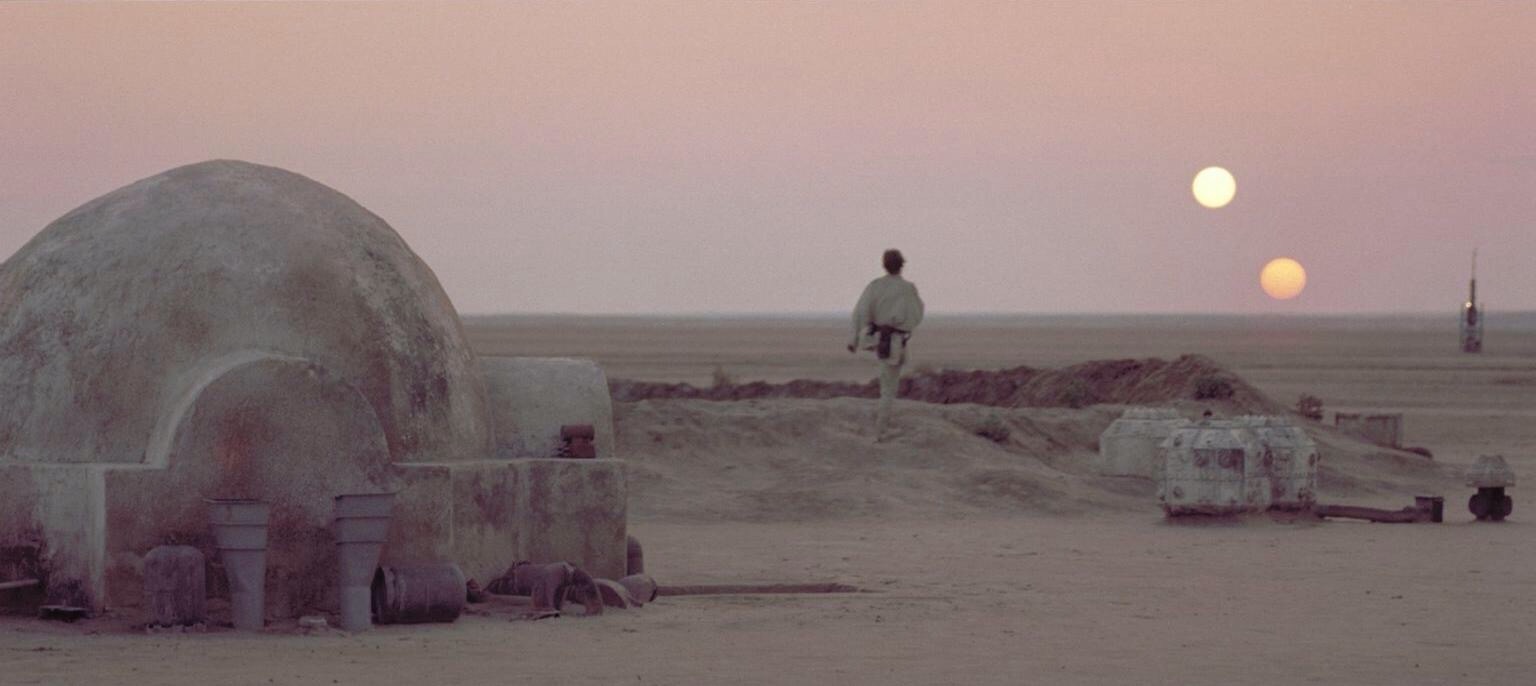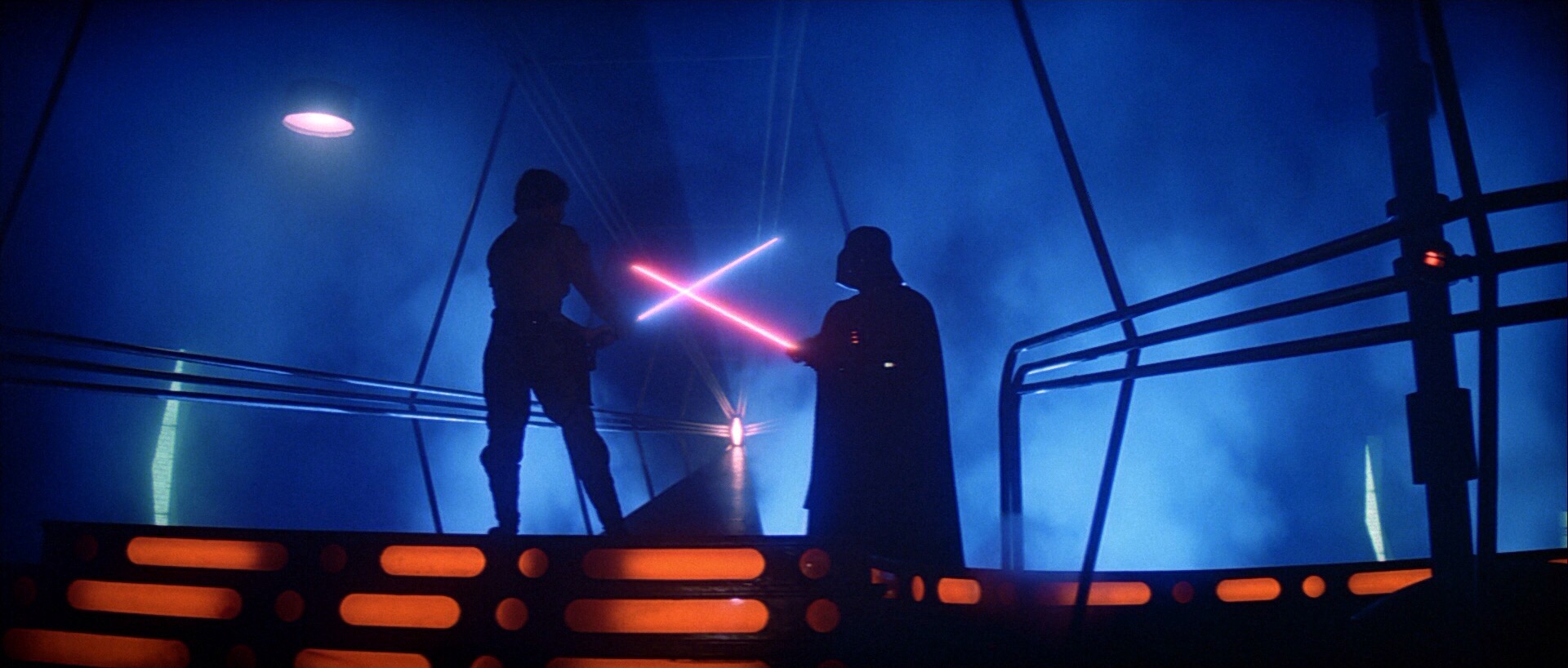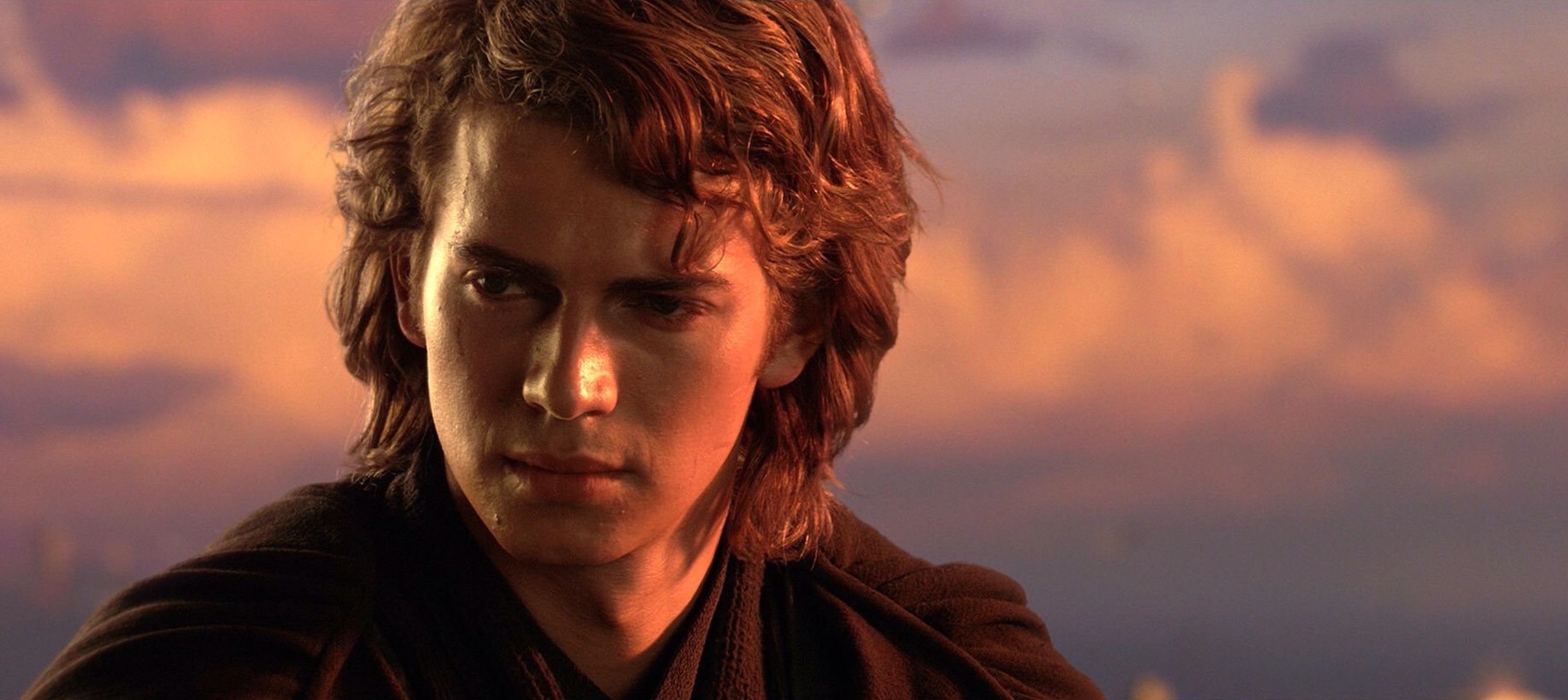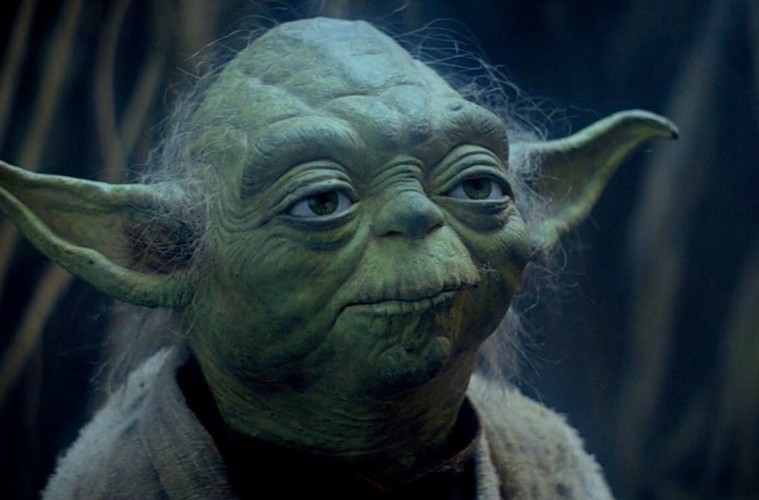Viewfinder ranks the Star Wars Saga, from favorite to most favorite.
By Andrew Allen
This year is the year. The year that we see the cinematic return of what is unquestionably the most beloved film franchise of all time: Star Wars. It has been almost thirty-eight years since the original film graced the screens of movie theaters world-wide, and so the series revival under Walt Disney Pictures that will carry it’s life-time across the forty-year mark is reason to rejoice and (apprehensively) anticipate. We know not what the future of Star Wars holds, but it’s good to hope for the best regardless of personal reservations.
So in the spirit of celebrating this “new hope”, this weekend I am proud to present to you Viewfinder’s Star Wars: Ranked where I will give you my personal ranking of all six Star Wars films, from least to greatest. May The Force be with this list.
#6. Episode II – Attack of the Clones
 Of the six cinematic Star Wars ventures, there is only one I would actually deem to be “not a good movie”, and that is easily 2002’s Attack of the Clones. The main fault of Clones is that, tonally speaking, it can’t entirely figure out what it wants to be. In chronicling Anakin Skywalker’s descent into darkness, the middle step proves the least assured of itself. Stiff and occasionally corny though it’s predecessor, The Phantom Menace, may be, it at the very least had a sense of energy or youthful charm to it that helped contextualize it’s flaws. Clones, in it’s quest to come across as dramatic and fairly adult, doesn’t afford itself that luxury, the results being entirely too self-serious for the written dialogue. Now, not every element of Clones misses it’s mark, the plot-line following Obi-Wan Kenobi on his mission to uncover a Separatist plot yields some interesting narrative turns and the occasional thrilling set-piece (his pursuit of bounty hunter Jango Fett being a highlight).
Of the six cinematic Star Wars ventures, there is only one I would actually deem to be “not a good movie”, and that is easily 2002’s Attack of the Clones. The main fault of Clones is that, tonally speaking, it can’t entirely figure out what it wants to be. In chronicling Anakin Skywalker’s descent into darkness, the middle step proves the least assured of itself. Stiff and occasionally corny though it’s predecessor, The Phantom Menace, may be, it at the very least had a sense of energy or youthful charm to it that helped contextualize it’s flaws. Clones, in it’s quest to come across as dramatic and fairly adult, doesn’t afford itself that luxury, the results being entirely too self-serious for the written dialogue. Now, not every element of Clones misses it’s mark, the plot-line following Obi-Wan Kenobi on his mission to uncover a Separatist plot yields some interesting narrative turns and the occasional thrilling set-piece (his pursuit of bounty hunter Jango Fett being a highlight).
Unfortunately, the rest of the film belond to the budding romance between Anakin and Padme who, in this particular film, are both having their worst days in both the scripting and acting departments. Now, I see what Lucas was attempting to do with here. The writing has an almost Shakespearean regality and flair to it, but it’s largely mismatched with the spirit of the locales and narrative, leaving the actors to try (and almost entirely fail) to reconcile their scenes tonally. Stiff, wordy and profoundly unsexy, there is very little to engage with in these star-crossed lovers, with John Williams’ wonderful, sweeping theme for their relationship speaking far, far more than the script or the actors ever manage. There are moments where the performances here click, most notably during the couple’s tragic trip to Tatooine and the death of Anakin’s mother at the hands of Tusken Raiders. It’s in these sequences that Hayden Christensen allows us glimpses of why Lucas hired him for the role as Anakin skirts closer to the Dark Side. Unfortunately, these sequences are few and far between. A reliably on-point performance from Ewan McGregor and one seriously kickin’ finale just barely manage to save Attack of the Clones from being a total trainwreck, but it is still, by far, the worst the series has to offer.
#5. Episode IV – A New Hope (AKA Star Wars)
 Our next stop brings us to the beloved original, since conveniently retitled A New Hope. Hope is, understandably, the most modest entry of the franchise. It is, perhaps, the least dramatically significant and the least epic in it’s scale. However, in it’s own right, it makes for a solid swashbuckling space adventure which introduces and plants the seeds of the universe that will sprout from it and bloom in future entries. For what it lacks in significance as it pertains to the overarching narrative, A New Hope largely makes up for in how thoroughly it sets the tone for the further adventures of Luke Skywalker, delicately laying story pieces that will come into play in the future without sacrificing the narrative at hand. Though it operates successfully on it’s own merit, A New Hope’s esteem largely stems from what it did rather than what it is. In the world of cinema, this first entry forever changed the game of sci-fi and fantasy on the big screen, rewriting the rules of adventure films and fantastical world-building all in one swoop. It’s role in the grand scheme of movie-making is pivotal and cannot be overlooked.
Our next stop brings us to the beloved original, since conveniently retitled A New Hope. Hope is, understandably, the most modest entry of the franchise. It is, perhaps, the least dramatically significant and the least epic in it’s scale. However, in it’s own right, it makes for a solid swashbuckling space adventure which introduces and plants the seeds of the universe that will sprout from it and bloom in future entries. For what it lacks in significance as it pertains to the overarching narrative, A New Hope largely makes up for in how thoroughly it sets the tone for the further adventures of Luke Skywalker, delicately laying story pieces that will come into play in the future without sacrificing the narrative at hand. Though it operates successfully on it’s own merit, A New Hope’s esteem largely stems from what it did rather than what it is. In the world of cinema, this first entry forever changed the game of sci-fi and fantasy on the big screen, rewriting the rules of adventure films and fantastical world-building all in one swoop. It’s role in the grand scheme of movie-making is pivotal and cannot be overlooked.
However, within context of the Star Wars series specifically, it’s hard not to feel as if Episode IV fades a bit in comparison to most of the films that surround it. It’s not that New Hope is a bad movie, on the contrary it’s quite a good bit of fun, particularly for younger audiences, it’s just that it has been so thoroughly surpassed in almost every regard, both in cinema as a whole and within it’s own series. Everything New Hope did, at least one of the following films did better in some way, shape or form. On top of this, it is possibly the only Star Wars film that actually loses steam as it’s runtime chugs on. The first act or two offer a solid character journey for Luke, one where the audience can freely engage with his desire to go beyond the little world he’s been confined to his whole life, then later his need to avenge his aunt and uncle by fighting The Empire. However, as the film progresses it begins to lose sight of it’s characters and story a bit in favor of protracted action sequences, which, in turn, suffer from excessive length and fuzzy locational geography (where characters are actually located within a field of conflict is critical to building tension, when you as the audience aren’t sure where everybody actually is, it’s rather hard to get that “edge of your seat” feeling), an issue that particularly plagues the film’s Death Star-assault finale. That being said, A New Hope, despite it’s flaws is still a good film in it’s own right, and serves as a good entryway for newcomers to the series. It ain’t the best, but that doesn’t mean it’s not worth watching.
#4. Episode I – The Phantom Menace
 Perhaps the most unfairly maligned film ever made, The Phantom Menace was more or less my entryway into Star Wars as a child. Sure, I had already seen the Original Trilogy, but the series as a whole didn’t really grab me until I watched The Phantom Menace, which ended up being my favorite movie for the majority of my childhood years. I’m not alone in this though, I know many a person from my particular generation who have echoed similar sentiments about Phantom Menace specifically, which, if anything, indicates that the movie must have done something very right. Which, I would argue, it did. Out of all six Star Wars movies, none of them exceed Episode I as a sheer showcase of imaginative power. From the stunningly designed palaces of Naboo, to the undersea depths of Otoh Gunga to the mind-blowingly dense expanse of the Coruscant skyline, no Star Wars movie does better than Phantom in it’s power to create jaw-droppingly, perfectly realized worlds and cultures. For what may be the first time in the series’ history (with no offense intended towards the Original Trilogy), Lucas’s universe feels like more than a colorful backdrop to blaster-slinging antics. It feels fully-realized here, functioning, purposeful. There’s an added dimension of life that Phantom specifically created for Star Wars and the universe is forever better off for it.
Perhaps the most unfairly maligned film ever made, The Phantom Menace was more or less my entryway into Star Wars as a child. Sure, I had already seen the Original Trilogy, but the series as a whole didn’t really grab me until I watched The Phantom Menace, which ended up being my favorite movie for the majority of my childhood years. I’m not alone in this though, I know many a person from my particular generation who have echoed similar sentiments about Phantom Menace specifically, which, if anything, indicates that the movie must have done something very right. Which, I would argue, it did. Out of all six Star Wars movies, none of them exceed Episode I as a sheer showcase of imaginative power. From the stunningly designed palaces of Naboo, to the undersea depths of Otoh Gunga to the mind-blowingly dense expanse of the Coruscant skyline, no Star Wars movie does better than Phantom in it’s power to create jaw-droppingly, perfectly realized worlds and cultures. For what may be the first time in the series’ history (with no offense intended towards the Original Trilogy), Lucas’s universe feels like more than a colorful backdrop to blaster-slinging antics. It feels fully-realized here, functioning, purposeful. There’s an added dimension of life that Phantom specifically created for Star Wars and the universe is forever better off for it.
Beyond the world-building, Phantom Menace also begins to weave the incredibly intricate story tapestry that would ultimately blossom into the Prequel Trilogy, little seeds of story are planted and patiently left for future movies throughout Episode I, a testament to the highly undervalued and misunderstood storytelling abilities of George Lucas. Ironically, despite the generalized (and misguided) disdain for The Phantom Menace, it’s imagery endures as some of the most iconic in the Star Wars canon. From deep-sea monster-chases to pod-racing to the film’s incredibly fun and bombastic finale, Phantom Menace is instantly recognizable and unique. The climactic “Duel of the Fates” between Qui-Gon, Obi-Wan and Darth Maul being one of, if not the most iconic fight sequence in cinematic history. At the end of the day, Phantom Menace may not be a flawless picture but it’s ambition and imaginative power put the overwhelming majority of blockbuster films to shame. Episode I captured the imaginations of an entire generation of children who grew to become avid Star Wars fans, and that is a legacy that even the most acidic, jaded “fanboy” can’t erase.
#3. Episode VI – Return of the Jedi
 It was almost a toss-up between this film and the next, but ultimately Return of the Jedi just barely got edged out of the #2 spot. But that shouldn’t, by any means, be seen as a slight against this excellent film. Though not quite as across-the-board solid as it’s immediate predecessor, the final act of Return of the Jedi is the strongest dramatic stretch of the entire Original Trilogy, possibly even the entire series. The Battle of Endor stands as the pinnacle of cinematic battle-creation, juggling three different individual zones of conflict with confidence and clarity (including the series’ best space battle). The most pivotal of these being the final duel between Luke and Vader aboard the Second Death Star, as orchestrated by Emperor Palpatine, AKA Darth Sidious. This is probably the most emotionally dramatic and personal duel of the series, and while it’s not the most technically impressive, it is deeply felt and, ultimately, quite powerful as Luke is lured closer and closer to The Dark Side.
It was almost a toss-up between this film and the next, but ultimately Return of the Jedi just barely got edged out of the #2 spot. But that shouldn’t, by any means, be seen as a slight against this excellent film. Though not quite as across-the-board solid as it’s immediate predecessor, the final act of Return of the Jedi is the strongest dramatic stretch of the entire Original Trilogy, possibly even the entire series. The Battle of Endor stands as the pinnacle of cinematic battle-creation, juggling three different individual zones of conflict with confidence and clarity (including the series’ best space battle). The most pivotal of these being the final duel between Luke and Vader aboard the Second Death Star, as orchestrated by Emperor Palpatine, AKA Darth Sidious. This is probably the most emotionally dramatic and personal duel of the series, and while it’s not the most technically impressive, it is deeply felt and, ultimately, quite powerful as Luke is lured closer and closer to The Dark Side.
It’s really this climactic sequence that essentially anchors the entire film, and even the series as a whole in some critical ways. Ian McDermid’s (at that point) brief appearance as the evil Emperor is electrifying, successfully succeeding the villain-hood of Darth Vader in a surprisingly brief amount of time. It’s an oft-overlook credit to the screenplay by Lucas and Lawrence Kazdan that they successfully removed audience disdain from the most famous villain of all time and transplanted it into another character all within the span of one film, effectively, and with incredible nuance, transforming Vader from antagonist into protagonist and setting the wheels in motion for his ultimate redemption. What makes Episode VI so important is how definitively it set the standard for cinematic finales. So far as finale chapters go, or, more specifically, final acts of final chapters go, they don’t come much better than Return of the Jedi.
#2. Episode V – The Empire Strikes Back
 Though I’m not granting Empire the honor of “best Star Wars film”, I will say that it is the most solid. Across the board there is little to nothing to actually criticize in Empire; it’s scripting is compelling, it’s direction making the most of it’s performers, the cinematography is stunning, the visual effects largely hold up to this day. Cliche to say though it may be, Empire is the standard of sequel-making. Which isn’t to say that it’s the best sequel ever made (I wouldn’t say so), but in it’s relationship with it’s predecessor, it capitalizes on and improves upon the strengths of A New Hope in every way a sequel really should. Luke Skywalker’s character really flourishes in this film, growing beyond the two-dimensional stock hero from before. Mark Hamill’s performance grow to accommodate this new change, giving Luke a newfound sense of purpose. The adventures of Han, Leia and the rest of the crew of the Millennium Falcon yield the most specifically entertaining story arc of the Original Trilogy, one which includes a thrilling spaceship chase-sequence through an asteroid field.
Though I’m not granting Empire the honor of “best Star Wars film”, I will say that it is the most solid. Across the board there is little to nothing to actually criticize in Empire; it’s scripting is compelling, it’s direction making the most of it’s performers, the cinematography is stunning, the visual effects largely hold up to this day. Cliche to say though it may be, Empire is the standard of sequel-making. Which isn’t to say that it’s the best sequel ever made (I wouldn’t say so), but in it’s relationship with it’s predecessor, it capitalizes on and improves upon the strengths of A New Hope in every way a sequel really should. Luke Skywalker’s character really flourishes in this film, growing beyond the two-dimensional stock hero from before. Mark Hamill’s performance grow to accommodate this new change, giving Luke a newfound sense of purpose. The adventures of Han, Leia and the rest of the crew of the Millennium Falcon yield the most specifically entertaining story arc of the Original Trilogy, one which includes a thrilling spaceship chase-sequence through an asteroid field.
In a way, The Empire Strikes Back is Star Wars epitomized. Packed to the brim with adventures and colorful characters and places, there’s a strong sense of life and energy to Empire that only a Star Wars film has the unique ability to conjure. Paired with beautifully shot imagery by DP Peter Suschitzky and director Irvin Kershner, the visual experience of Empire possesses an ability to drop jaws in a manner that rivals The Phantom Menace, despite being released almost two decades prior. The finale on Cloud City specifically conjures some of the most compelling, iconic imagery from the entire saga, the dimly lit duel between Luke and Vader beginning with a stunning shot of the duelists in silhouette. Unlike A New Hope, Empire is the first Star Wars film to give off the feeling that something more than a mere adventure is unfolding onscreen. A sense of timelessness pervades it, as if an ancient legend of sorts is playing out before the audience. A true sense of heroic journey is what makes Empire such a compelling story, as a universe of mystery and intrigue begins to open up around the young Skywalker, we get a sense for the first time just how big the stakes truly are, and just how important Luke truly is to this intergalactic struggle.
#1. Episode III – Revenge of the Sith
 It was in 2005, six movies in to his series, that George Lucas finally constructed his masterpiece. The film that ultimately defines the entire Star Wars saga. That film is Revenge of the Sith.
It was in 2005, six movies in to his series, that George Lucas finally constructed his masterpiece. The film that ultimately defines the entire Star Wars saga. That film is Revenge of the Sith.
When Lucas set out to create a trilogy of movies that would construct the backstory of the ill-fated Anakin Skywalker, Revenge of the Sith was always going to be the pivotal film, the one that defined the prequel trilogy’s success or failure. After Attack of the Clones, one would be forgiven for assuming that he didn’t have the directorial chops to pull of such a dramatically weighty feat. But Lucas jumped from crafting the worst Star Wars film to the one that is truly his magnum opus. An epic tragedy of Shakespearean ambition, one that he nails with assured finesse. Though it’s propensity for melodrama is oft-derided by the fanbase, I would argue that it’s the very thing that makes Sith resonate so deeply. It’s hard to make a film that’s so unashamedly emotional and dramatic in an age so distinctly defined by jadedness and an insatiable need for “realism” and “grit”, but Sith sticks to it’s guns, delivering a profoundly moving tragedy the likes of which blockbuster cinema had never seen before and likely never will again. It’s gutsy and uncompromising in it’s presentation of Anakin’s descent into evil and his transformation into Darth Vader, paying no heed to the further marketability of the character, or even aiming to maintain “likability”. Episode III is a tale of destruction and tragedy, plain and simple. One of the purest visionary feats of big-budget storytelling ever conceived.
The value of Sith, however, lies not only in what the film itself creates, but in how deftly it recontextualizes the story that chronologically follows it. Capitalizing on story moments from the following films, particularly Return of the Jedi and investing newfound weight and dramatic significance to them. The entire story of Anakin/Vader as it spans across the Original Trilogy can be understood in a new, significantly deeper light due to Sith (and the prequels in general). It isn’t just a great film, it’s the final piece of a deftly woven tapestry of storytelling. Complex but understandable, nuanced yet impactful enough to register with the youngest of audience members. It is often a sentiment shared amongst members of the cinephile community that truly great, uncompromising storytelling cannot be found in a summer blockbuster. To refute that I point to Revenge of the Sith. A powerful story, a stunning film, and by far the greatest product of the incredible imagination of George Lucas.
Andrew Allen is a television and film writer for Action A Go Go. He is an aspiring screenwriter and director who is currently studying at the University of Miami. You can check him out on Tumblr @andrewballen and follow him on Twitter @A_B_Allen.
Action A Go Go on Twitter and Instagram |Be sure to leave your thoughts in the comments section!
The views and commentaries expressed on these pages are solely those of their authors and are not necessarily either shared or endorsed by ActionAGoGo.com.

